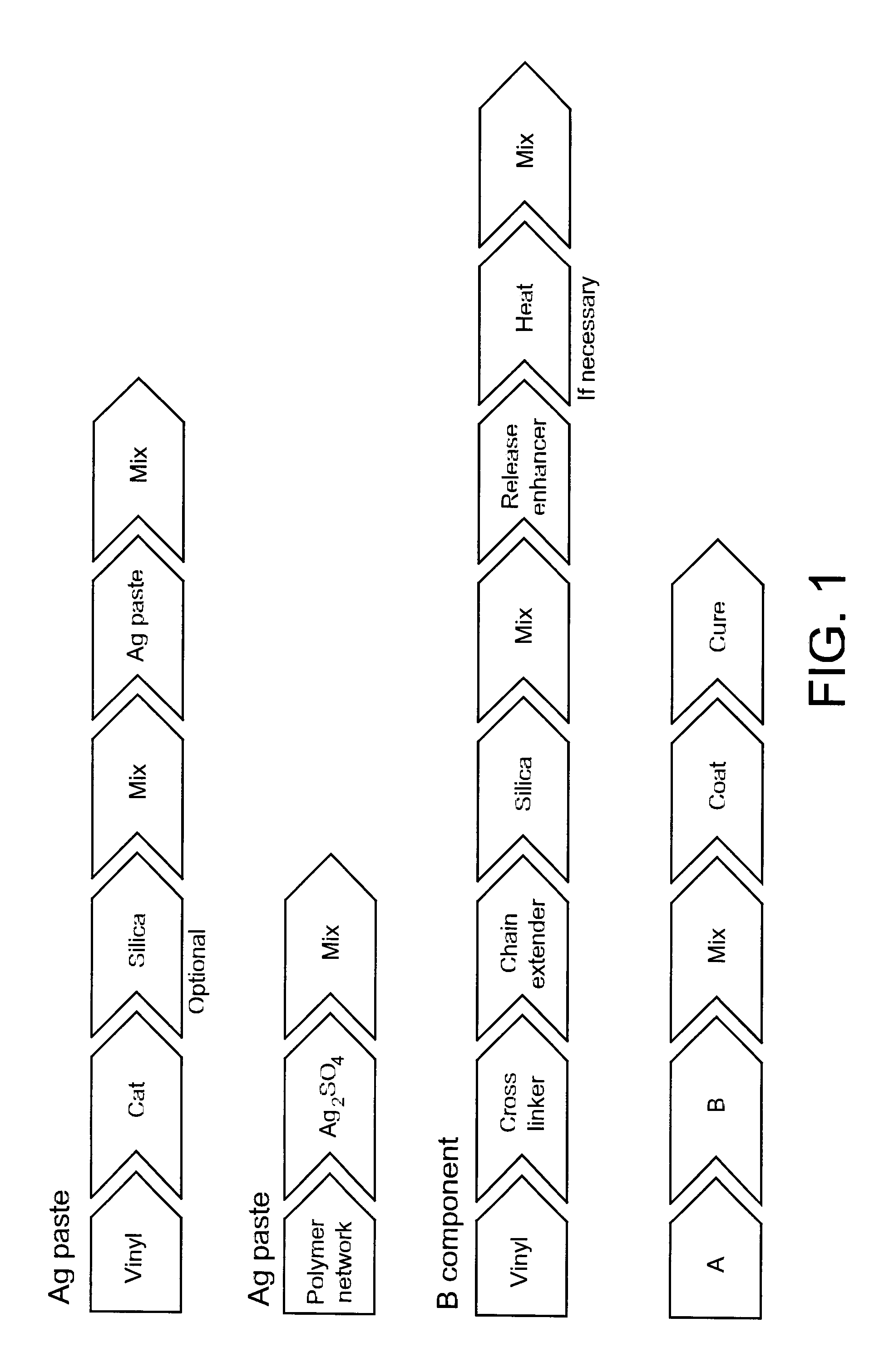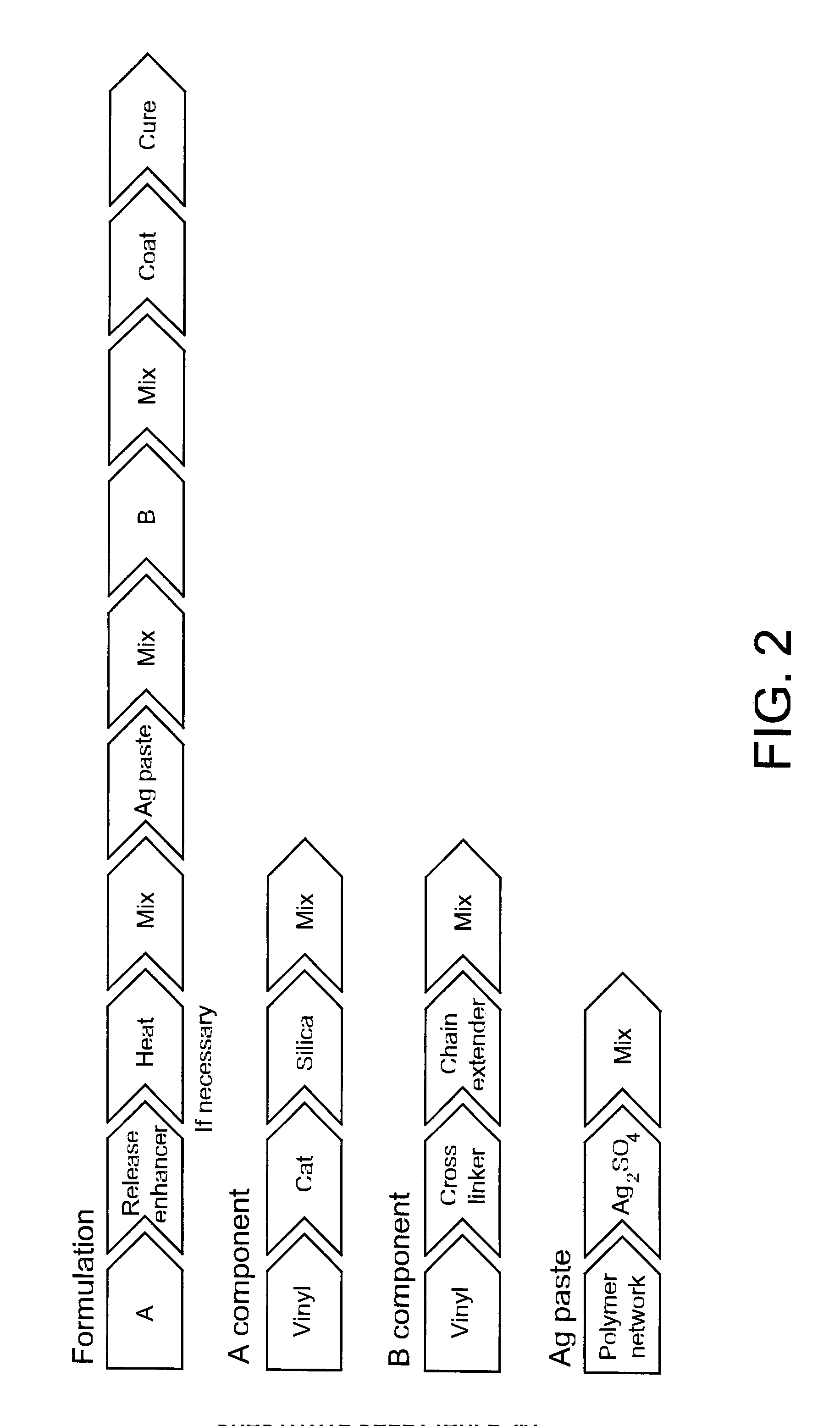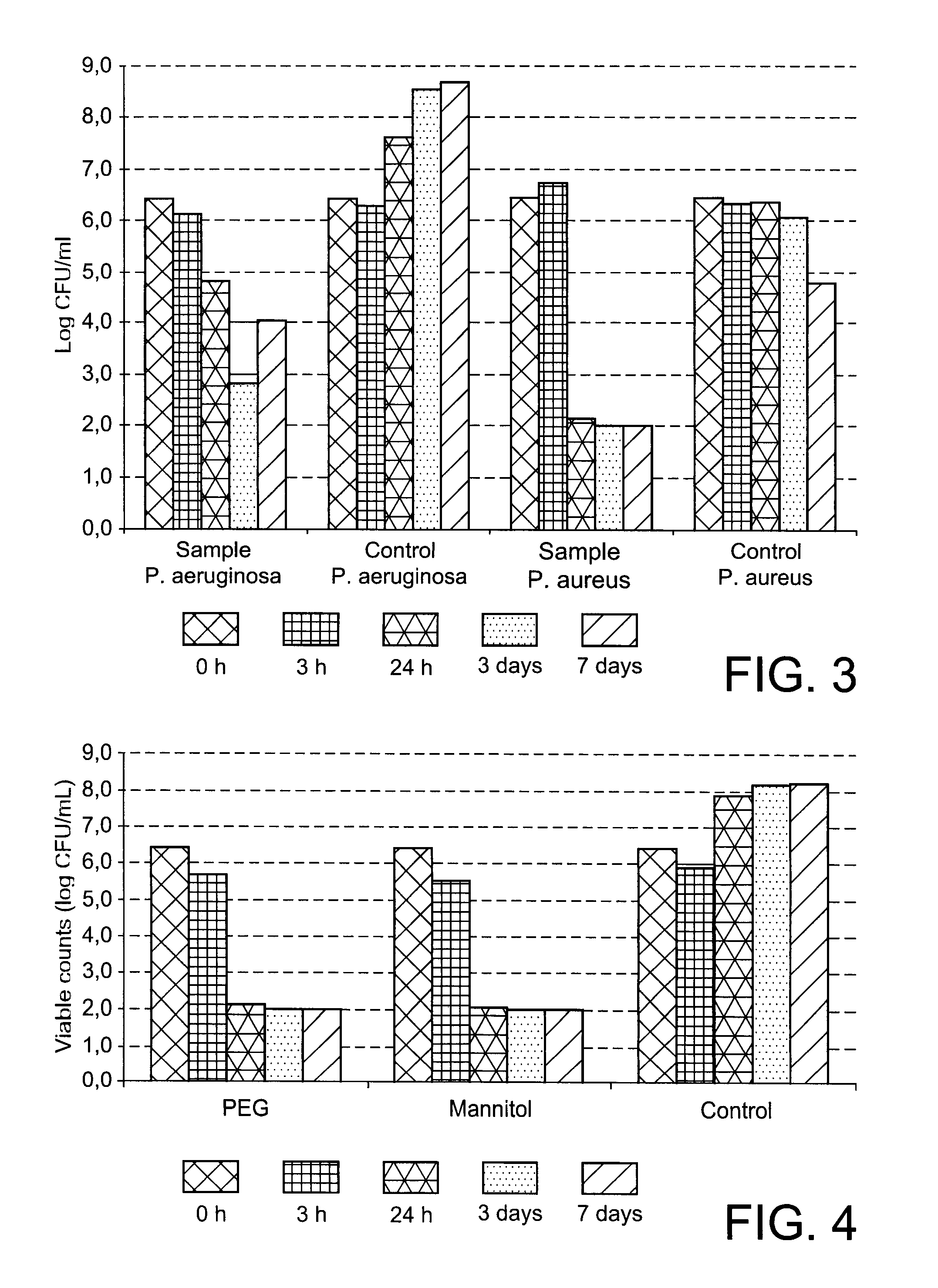Antimicrobial gels
- Summary
- Abstract
- Description
- Claims
- Application Information
AI Technical Summary
Benefits of technology
Problems solved by technology
Method used
Image
Examples
example 1
Silicone Gel Compositions
[0077]Silicone gel compositions were prepared by mixing together the components in the amounts listed below. First, a silicone gel formulation was prepared, which was utilized together with the antimicrobial and release-enhancing additives.
[0078]The silicone gel was prepared in a two-component system in order to separate the catalyst and the crosslinker / chain extender prior to the curing process.
[0079]Component A may, inter alia, comprise the following components:[0080]1. Vinyl terminated PDMS (Vin 1000) and Silica (HDK, H15) were mixed in a jar and blended for 5 minutes with a Speedmixer.[0081]2. The catalyst was added and the mixture was blended for 2 min in the Speedmixer
[0082]Component B may, inter alia, comprise the following components:[0083]1. The polymers, including Vin 1000, CL, and CE, were mixed in a jar and blended 2 min in the Speedmixer.
TABLE 1Component AComponent BSilicaCatalystCLCEVin 1000HDK H15511Vin 1000AB 109380AB 1093660.4790.020.0010.19...
example 2
Silicone Formulation with Silver Sulfate and PEG
[0085]A formulation was prepared using a method comprising the following steps:[0086]1) Adding a silicone component A (3,75 g), in accordance with example 1, in a jar with PEG 8000 (3 g).[0087]2) heating at 80 ° C. until the PEG is molten. The phases are subsequently mixed in a Speedmixer until an emulsion is formed (a timeframe of approximately 2 min).[0088]3) preparing a paste of Ag2SO4 (3 g) and Velvesil plus (1,5 g) by mixing the silver powder and the Velvesil in a jar, and blending with the Speedmixer.[0089]4) adding the silver paste to component A and mix[0090]5) adding inhibitor (0.015 g) to silicone B and mix[0091]6) add silicone component B (3.75 g)
TABLE 2PEG 8000Velvesil PlusAg2SO4Silicone ASilicone BInhibitor0.20.10.20.250.250.001(3 g)(1.5 g)(3 g)(3.75 g)(3.75 g)(0.015 g)
[0092]The above outlined steps may naturally, where applicable, be performed simultaneously or sequentially or in any combination of sequential steps.
example 3
Silicone Formulation with Silver Sulfate and Mannitol
[0093]A formulation was prepared using a method comprising the following steps:[0094]1) putting the silicone component A (3 g), in accordance with example 1, in a jar with mannitol (4.5 g).[0095]2) mixing the phases in a Speedmixer until a suspension is formed (approximately 2 min).[0096]3) preparing a paste of Ag2SO4 (3 g) and Velvesil plus (1.5 g) by mixing the silver powder and Velvesil in a jar and blending with the Speedmixer.[0097]4) adding the silver paste to component A and mix[0098]5) adding inhibitor (0.015 g) to silicone B and mix[0099]6) adding the silicone component B (3.75 g)
TABLE 3MannitolVelvesil PlusAg2SO4Silicone ASilicone BInhibitor0.30.10.20.20.20.001(4.5 g)(1.5 g)(3 g)(3 g)(3 g)(0.015 g)
[0100]The formulations were coated on a film substrate comprising polyurethane. Test pieces with a diameter of 20 mm were punched and subjected to antimicrobial testing according to the CZoI method and the two-compartment test ...
PUM
| Property | Measurement | Unit |
|---|---|---|
| Temperature | aaaaa | aaaaa |
| Length | aaaaa | aaaaa |
| Length | aaaaa | aaaaa |
Abstract
Description
Claims
Application Information
 Login to View More
Login to View More - R&D
- Intellectual Property
- Life Sciences
- Materials
- Tech Scout
- Unparalleled Data Quality
- Higher Quality Content
- 60% Fewer Hallucinations
Browse by: Latest US Patents, China's latest patents, Technical Efficacy Thesaurus, Application Domain, Technology Topic, Popular Technical Reports.
© 2025 PatSnap. All rights reserved.Legal|Privacy policy|Modern Slavery Act Transparency Statement|Sitemap|About US| Contact US: help@patsnap.com



